The Subaru Outback is the automotive equivalent of an air fryer: a kitchen appliance that can actually deliver joy—slightly lower-guilt joy compared to other appliances, that is. For 2026, it’s even better, with a far-improved interior and fewer rumbles from the outside world. It’s also uglier, much more so than ever before, but only from the outside. And, as with any Subaru other than the zippy BRZ coupe, its appearance improves a bit when coated with muck.
I spent a long day rambling around rocky, loose fire roads within an hour’s drive of Sedona, Arizona, in the two bookends of the 2026 Outback lineup: the base Premium trim with just 180 horsepower and the range-topping Touring with the available turbocharged model delivering 260 hp.
Both could better harness the power vortices alleged to haunt Sedona, but quick acceleration has never been an Outback hallmark.
Incremental Improvements Show That Subaru Was Paying Attention
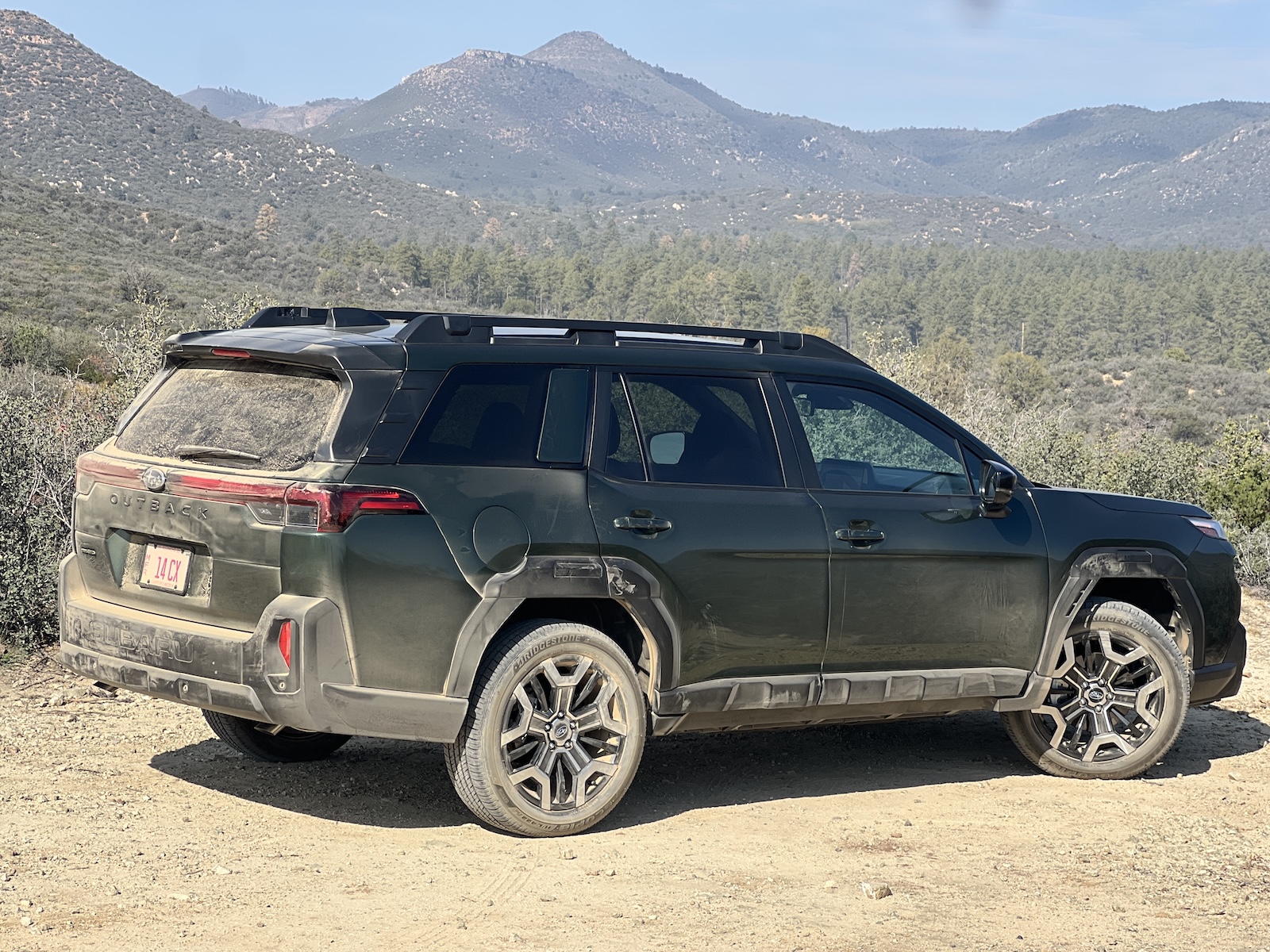
Basically everything you can see or touch in and on the Outback has been reworked for 2026, marking the model’s biggest rethink in a long time. It’s still a wagon on stilts, albeit less of one than ever before. For instance, the new Outback still sits 8.7 inches off of the ground, but its taller roofline stretches overall height from the outgoing model’s 66.1 inches tall to 67.5 inches. That makes it about the same height as a Toyota RAV4, yet quite a bit shorter than a Toyota 4Runner or Honda Passport.
Visually, its cues are more SUV-like than wagon-like, particularly in the blocky, upright front end. More upright B-, C-, and D-pillars—those aft of of the front passenger compartment—enhance the SUV-ish look. Subaru dialled back some of the outgoing model’s cladding, but it amped up surface detailing. The fender flares have a needlessly angular look with fake grab handles that would serve no purpose even if they were functional (If you need to portage your Outback, you’ve perhaps gone too far into the woods).
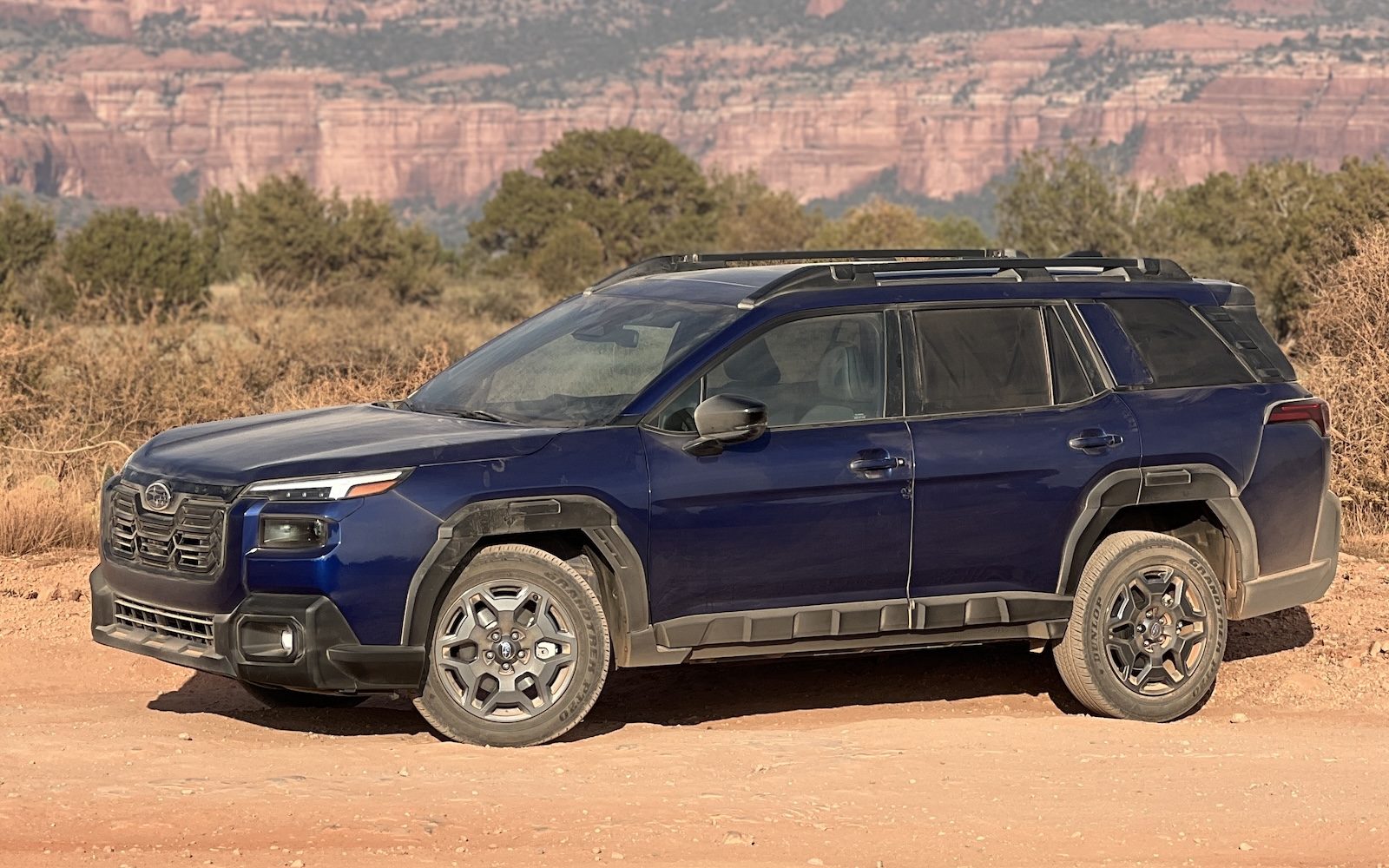
So busy is the Outback’s exterior styling that the three trims I was able to view—base Premium, mid-level Limited, and almost luxurious Touring—are roughly on par with the outgoing model’s overstyled off-road Wilderness trim. The new Wilderness, which is a few months out, takes its cladding to the extreme.
Subaru told us that it took a few of its most obsessive owners on a camping trip to learn how they used their vehicles; we can only imagine the fireside conversation. But what resulted were a host of functional detail improvements.

For instance, the standard roof rack still sprouts up to catch plenty of wind, but it’s stronger, has easier-to-access hooks for attaching rooftop tents and the like, and it is even rated to hold one side of a hammock. You will, however, have to buy crossbars if you want to attach anything to it. At the rear (out back, if you will), the Outback’s more upright liftgate opens to reveal a larger aperture and a slightly bigger cargo area than before. Opting for the tow hitch option—the Outback can lug up to 3,500 pounds—no longer requires bumper surgery thanks to the new pop-out panel. Back in the cargo area, the fabric luggage cover can be arranged to create a partition or a small hammock useful for holding loose items. Its best asset is that it takes up very little space when it’s not needed.

The convenience upgrades abound inside, too, where the Outback now has big door cupholders in a felt-lined compartment, a large tray for the wireless device charger that didn’t seem to like my iPhone, and, of course, rows of buttons. Subaru, perhaps more than any other automaker, has realized that people want buttons and knobs rather than touchscreens. I counted as many as 16 climate and seat buttons, where the old model had just eight. Then again, the old Outback had a vertical screen with the resolution of a Tamagotchi, so really, anything is an improvement.
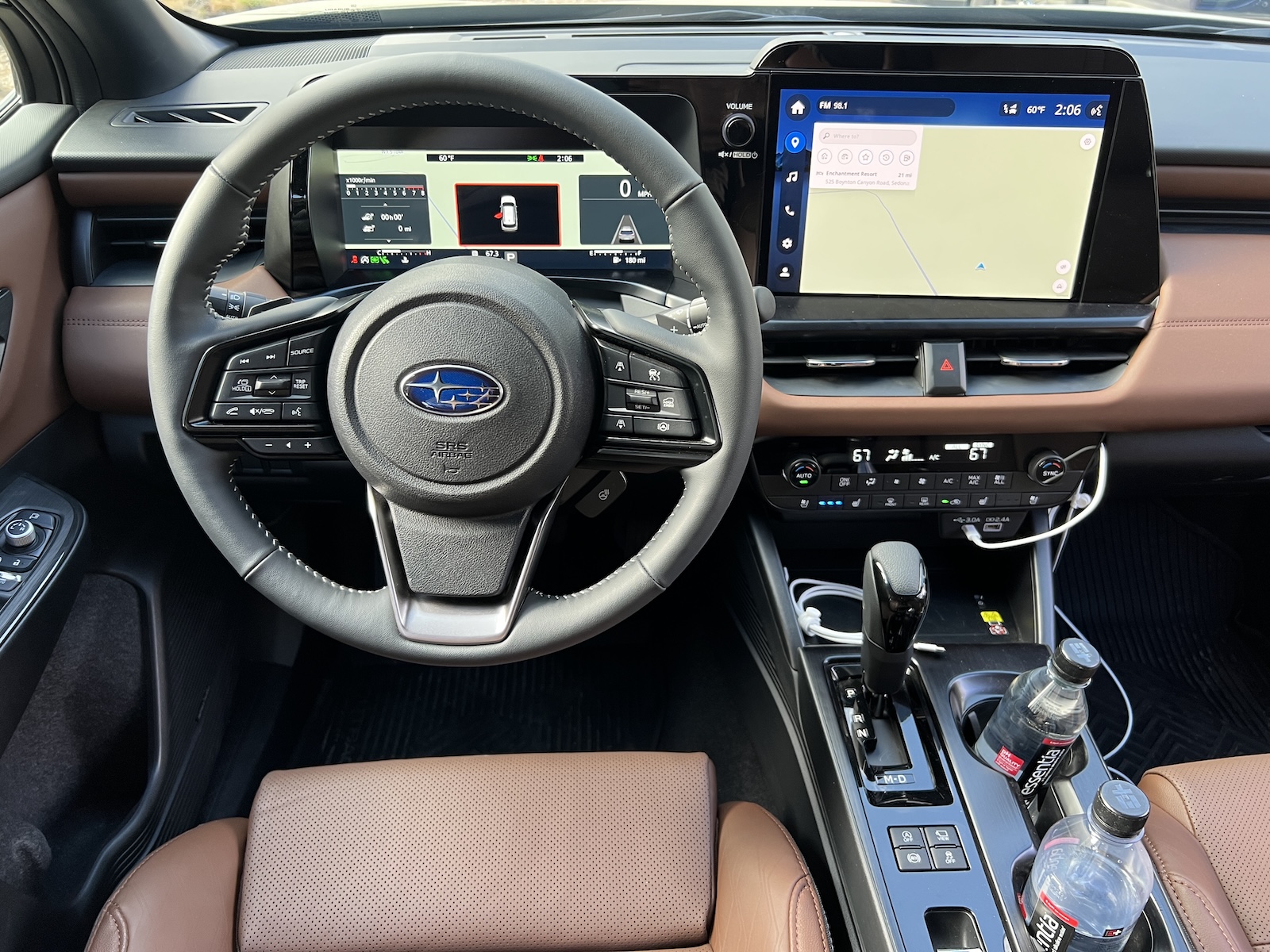
But let me not undersell just how much better the Outback’s new touchscreen is. It’s bright, crisp, and boasts new infotainment software that just seems to work right. The same goes for the digital instrument cluster, which, thankfully, has an analog-style mode. Other car brands should take note: this is how you do it with buttons, knobs, and no flashy software.

I never grew to like the way the Outback looks outside, but its interior is a big improvement. Premium and Limited trims have wide swaths of rugged-looking fabric that stretch across their door panels and dashboards. The look is relentless, but it also lightens the mood compared to the busy urethane used in the last model. Top Touring versions have color-matched vinyl that does not look or feel like their Nappa leather seats. If there’s a kvetch, it’s the black headliner that is textured to look like a Patagonia fleece but feels cheap to the touch.
On The Road: The Same As Before, But Much Quieter
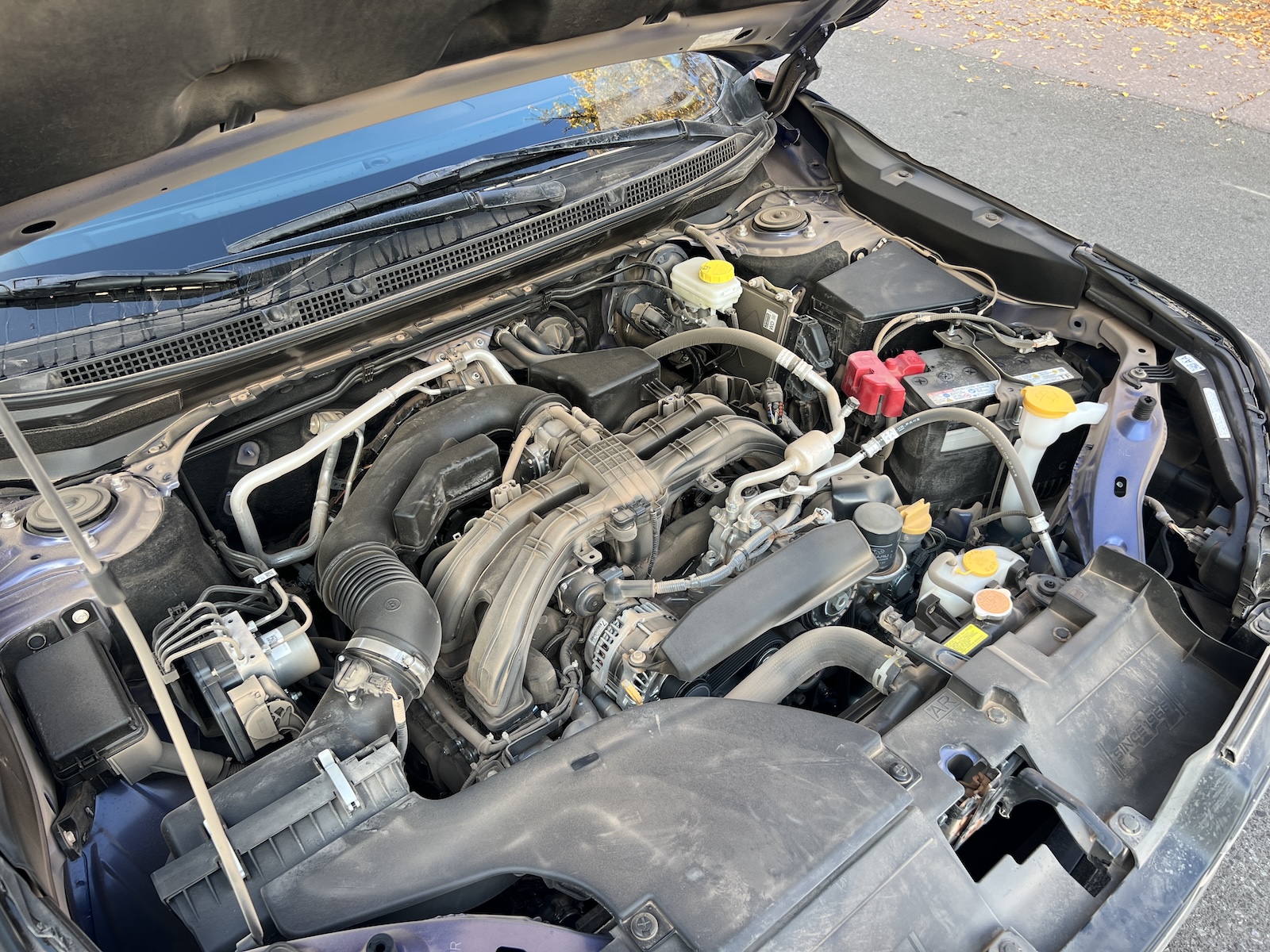
Once I secured the Outback’s hood prop rod—yes, really—I looked into the void that is its engine compartment. The standard 2.5-liter flat-four (FB25, in Subaru-speak) sits very low, with nothing in the way of plastic dress-up bits. Opt for the Outback XT and Subaru swaps in a 2.4-liter flat-four (FA24) with a turbo and a nice, wide intercooler fed not by a hood scoop but by a cutout on the cowl where the wipers rest.
Either way, the flat-four engines transmit power to all four wheels through a continuously variable automatic transmission (CVT) with steering wheel-mounted paddle shifters. The mechanical all-wheel-drive system is light on bells and whistles, but that’s just fine; tapping the steering wheel button for X-Mode engages hill-descent control and changes some of the traction and stability control parameters for loose terrain.
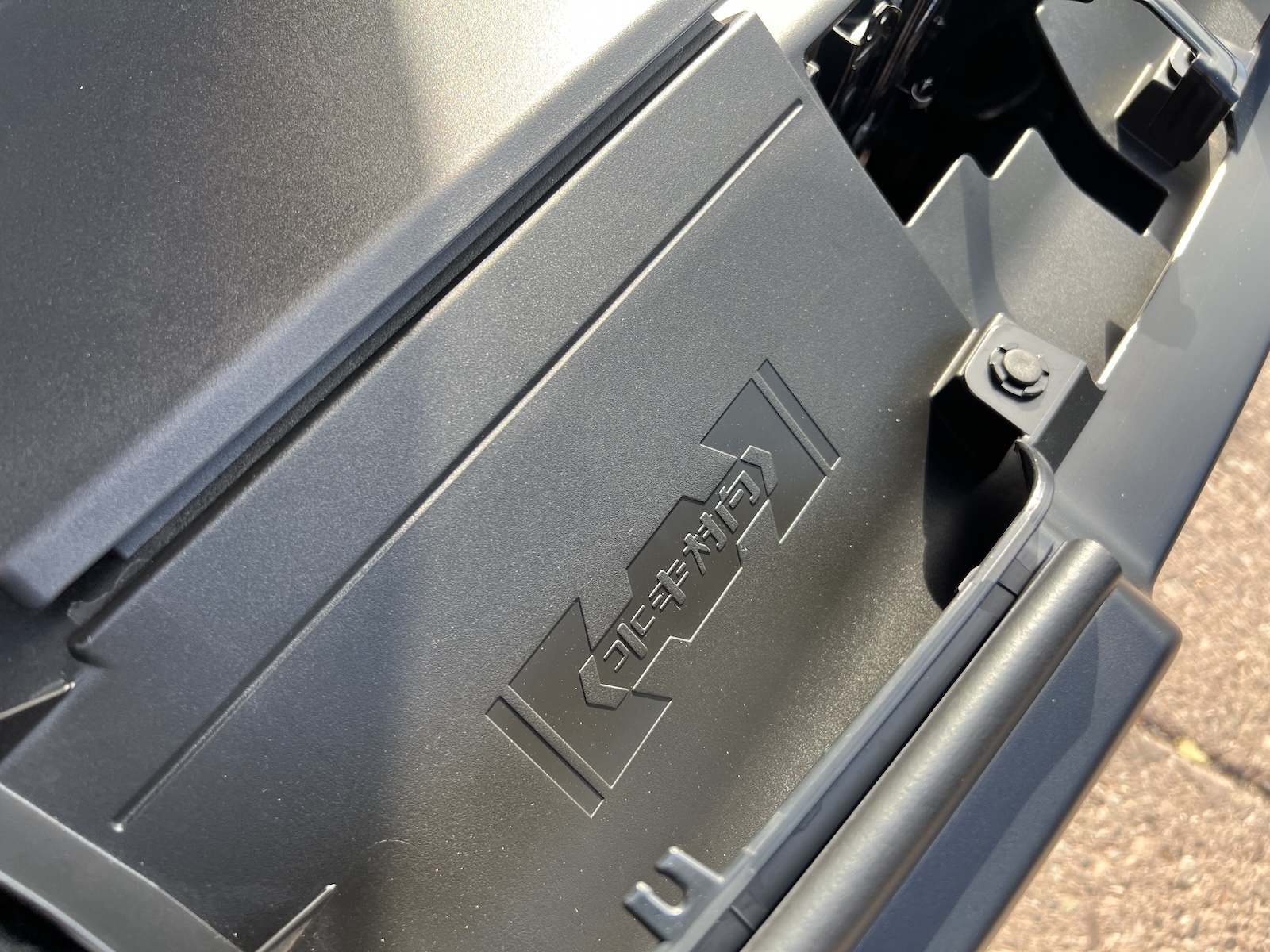
Subaru made myriad small changes to both engines, largely in the name of improving reliability and noise reduction. For instance, the non-turbo’s new piston rings and camshaft are expected to last longer, while its engine mounts and brackets reduce noise and vibration intrusion.
At least for now, there’s no hybrid version (It’ll come, eventually). Fuel economy suffers a bit as a result of the blockier shape and increased features that pork up the Outback. Per EPA test procedures, figure 27 MPG combined for the non-turbo and just 25 MPG combined for the XT, reductions of one MPG each over the old Outback.
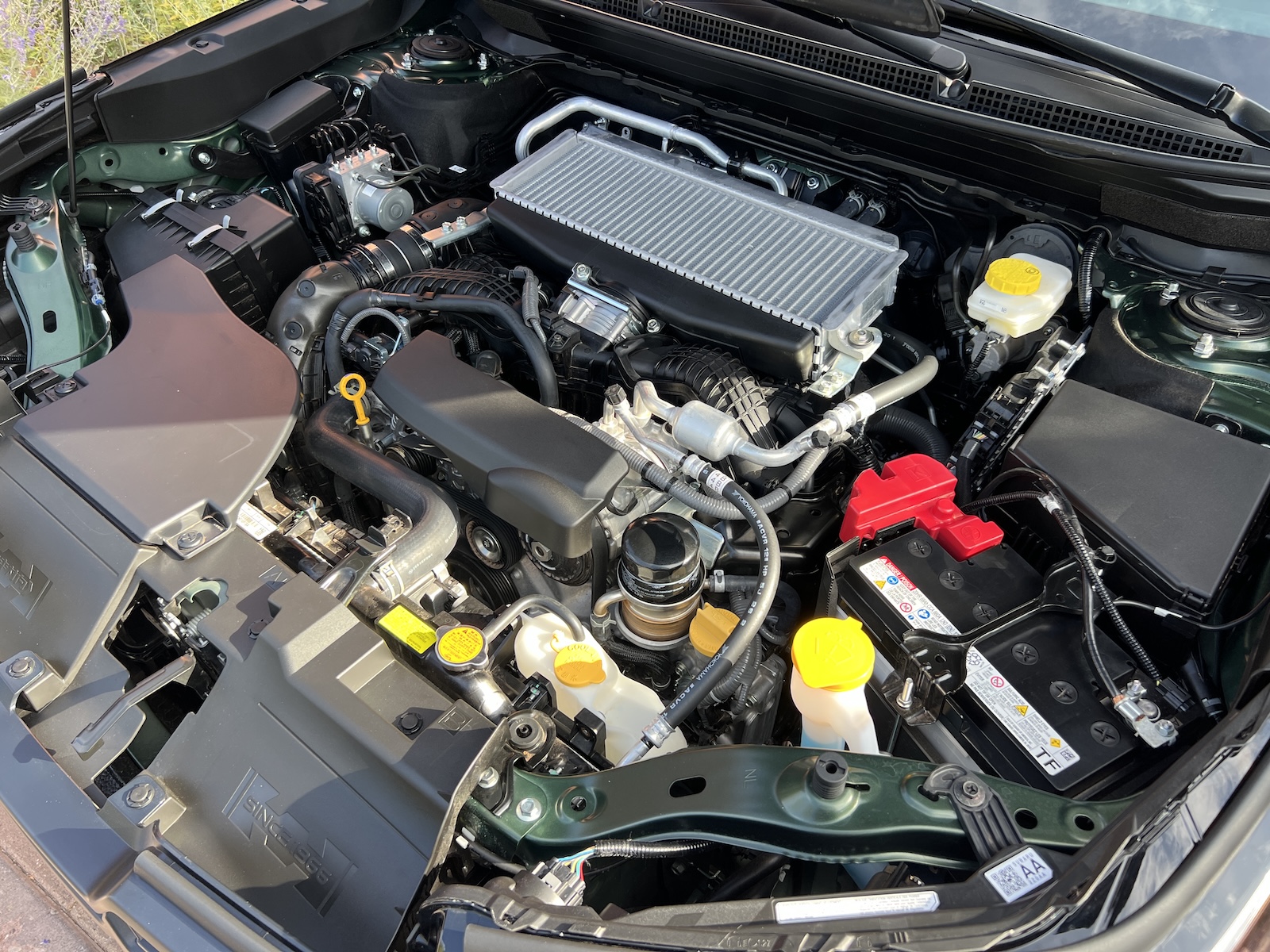
The Outback XT’s 260 horsepower and 277 pound-feet of torque must lug nearly 4,000 pounds worth of Subaru wagon/SUV around, so this is no WRX with more cargo space. I found acceptable acceleration and good mid-range punch, but certainly nothing in the way of plenty of reserve passing power. Predictably, the base version was noticeably less peppy, even if it can weigh nearly 250 pounds less in its fleetest (a.k.a. base model) configuration.

What surprised me was just how quiet the Outback was, though the 19-inch wheels mandatory with the turbo wear lower-profile tires than the 18s that come with the naturally aspirated version. They growled a bit more over rough pavement than the standard 18s. XT models have the same 12.4-inch front and 11.8-inch rear ventilated disc brakes as non-turbos, so the size-up wheels are a pointless vanity for an off-road-ish vehicle.
Yeah, the Outback has fairly long overhangs, so the mere 20-degree angle of approach and 21.4-degree angle of departure (slightly greater in XT trim) mean you have to pick your line carefully, even though it can straddle an 8.7-inch rock. (Get out your tape measure!) Also, the suspension—consisting of MacPherson struts up front and double-wishbones at the rear—doesn’t allow for much in the way of wheel droop. But the all-wheel-drive system responded quickly over loose rocks as I pushed an Outback XT up the kind of rocky terrain better suited to something with knobby tires. Only once or twice did traction control intervene, and never did I need to back up and try it again.

On the paved roads that led to the trails, the Outback exhibited less body lean than a typical SUV and its steering—made better this year by a dual-pinion rack—delivered sharp, if numb response. There’s nothing fun about the way the Outback handles, but does there really need to be? Even Subaru seems to agree since it deleted all drive modes aside from the off-road-ready X-Mode for 2026.
The base car’s 18-inch alloy wheels provide a comfy, composed ride. The 19s fitted to the XTs are noticeably firmer, and for no discernible reason since the quicker Outback doesn’t really handle any differently on pavement.
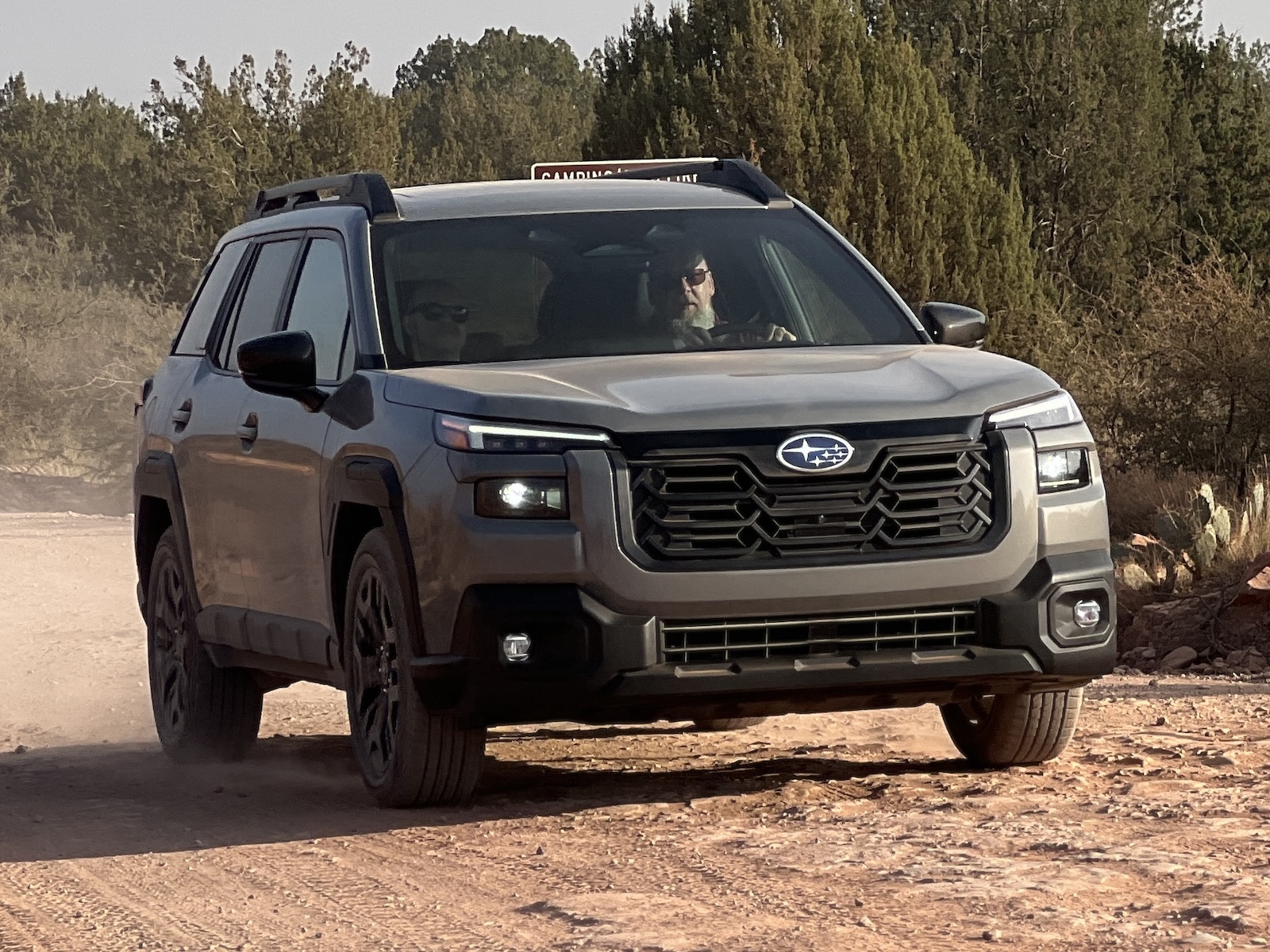
Drivers who want more capability should wait for the Wilderness, which, aside from being even uglier, will undoubtedly be the better off-roader. It has almost an inch of additional ground clearance thanks to a higher-riding suspension with special springs and adaptive dampers, and it rides on 17-inch wheels with way more sidewall for rock absorption. It promises to be the most comfortable Outback of the pack, though we’ll have to reserve judgment until next year when it goes on sale.
You Could Spend More, But Should You?
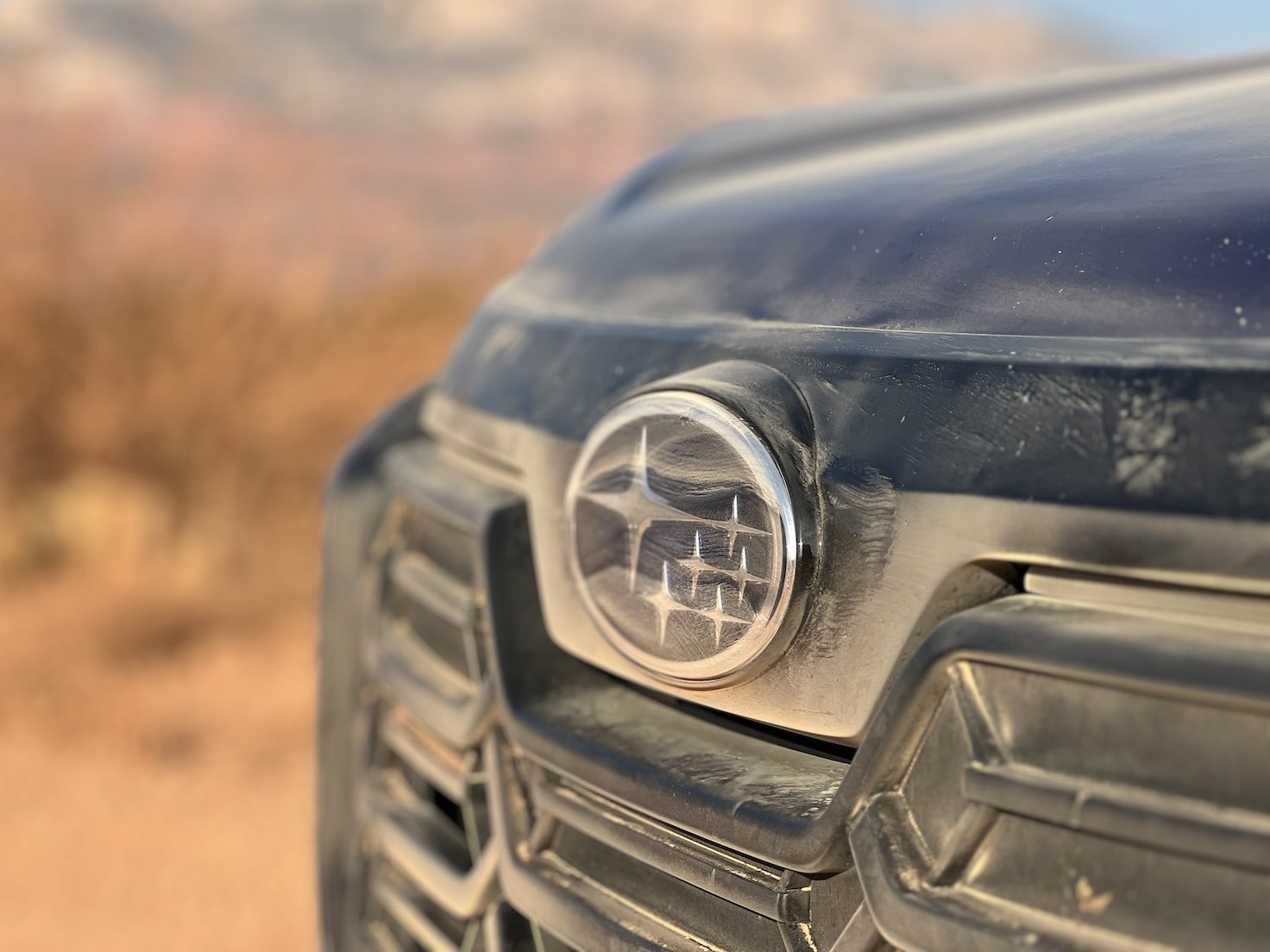
The Outback comes in three basic flavors, aside from the rather substantially different Wilderness: Premium, Limited, and Touring. The base version comes only with the non-turbo engine. That engine is standard in Limited and Touring guise, too, but buyers can spend an extra $3,000 or so to boost their way into an Outback XT.
Make no mistake: the 2026 Subaru Outback is no longer the bargain it once was. Today, you’ll need $36,445 (including a mandatory $1,450 destination charge) to get in the door, which buys a Premium with synthetic leather seats that are heated up front, power adjustment for the driver’s seat, a power liftgate, and a 12.1-inch touchscreen with wireless Apple CarPlay and Android Auto compatibility. That money also nets a full suite of driver-assistance tech under the EyeSight umbrella, including adaptive cruise control with stop-and-go, blind-spot monitors, and a reasonably good ability to center itself in a lane at highway or city speeds. There’s also a driver-attention monitor, which was slightly less annoying in my driving than it was in the prior Outback. Another $2,270 buys a sunroof, a wireless charging pad, and a heated steering wheel, but personally I’d stick with the base version.

The step-up Limited costs $43,165, a big hike for leather seats, navigation, Harman Kardon speakers, a sunroof, and a power passenger seat. If you want luxury, save for the top Touring with its ventilated front seats, additional driver’s seat adjustments, Nappa leather upholstery, and upgrades to the EyeSight system that allow for true hands-free driving on certain mapped roads. Though Subaru’s system trails Ford’s Blue Cruise or GM’s Super Cruise, a so-equipped Outback is a relatively reasonable $46,845 for something so well-equipped.
Add premium paint to an Outback Touring XT and it’ll nudge in just south of $50,000, though most will probably land on dealer lots with various budget-busting manufacturer-installed accessories like mud flaps and roof rails.

Then again, it’s hard to figure out whether the Outback is a good buy or an expensive one since it doesn’t really have a direct rival. The base Outback Premium is undoubtedly nicer inside, more feature-laden, and more capable than a $36,100 Honda CR-V EX with all-wheel drive. The Subie is also a steal compared to the bulky Honda Passport, which starts at an eye-popping $46,250. In top Touring XT trim, the Outback’s snazzy cabin and underhood muscle more or less match the nearly $60,000 Jeep Grand Cherokee Overland. But does anyone really cross-shop the Outback? Not really. There’s not much reason to branch out when you’ve found an appliance that you like. You stick with it.
Top graphic image: Andrew Ganz

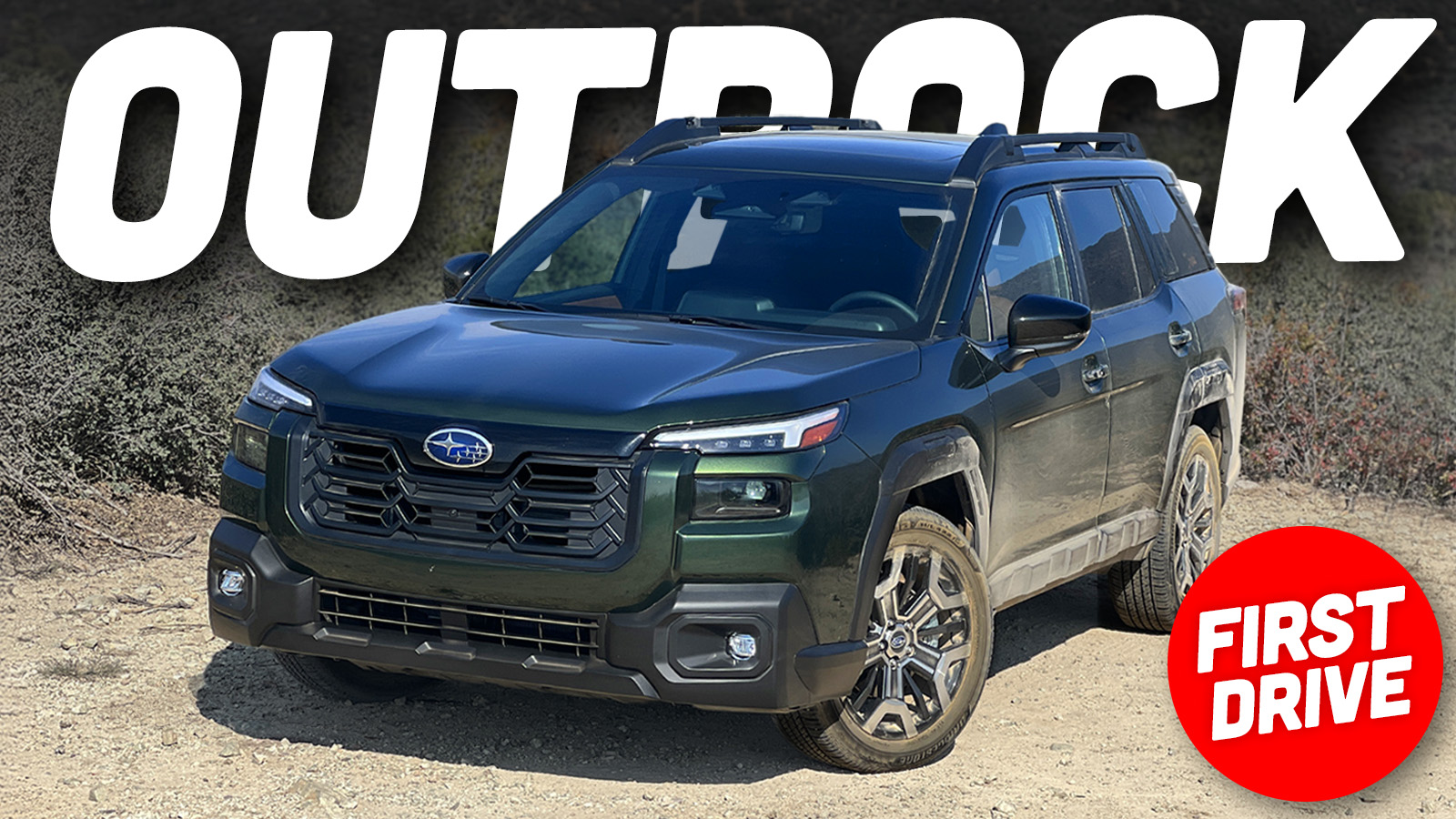





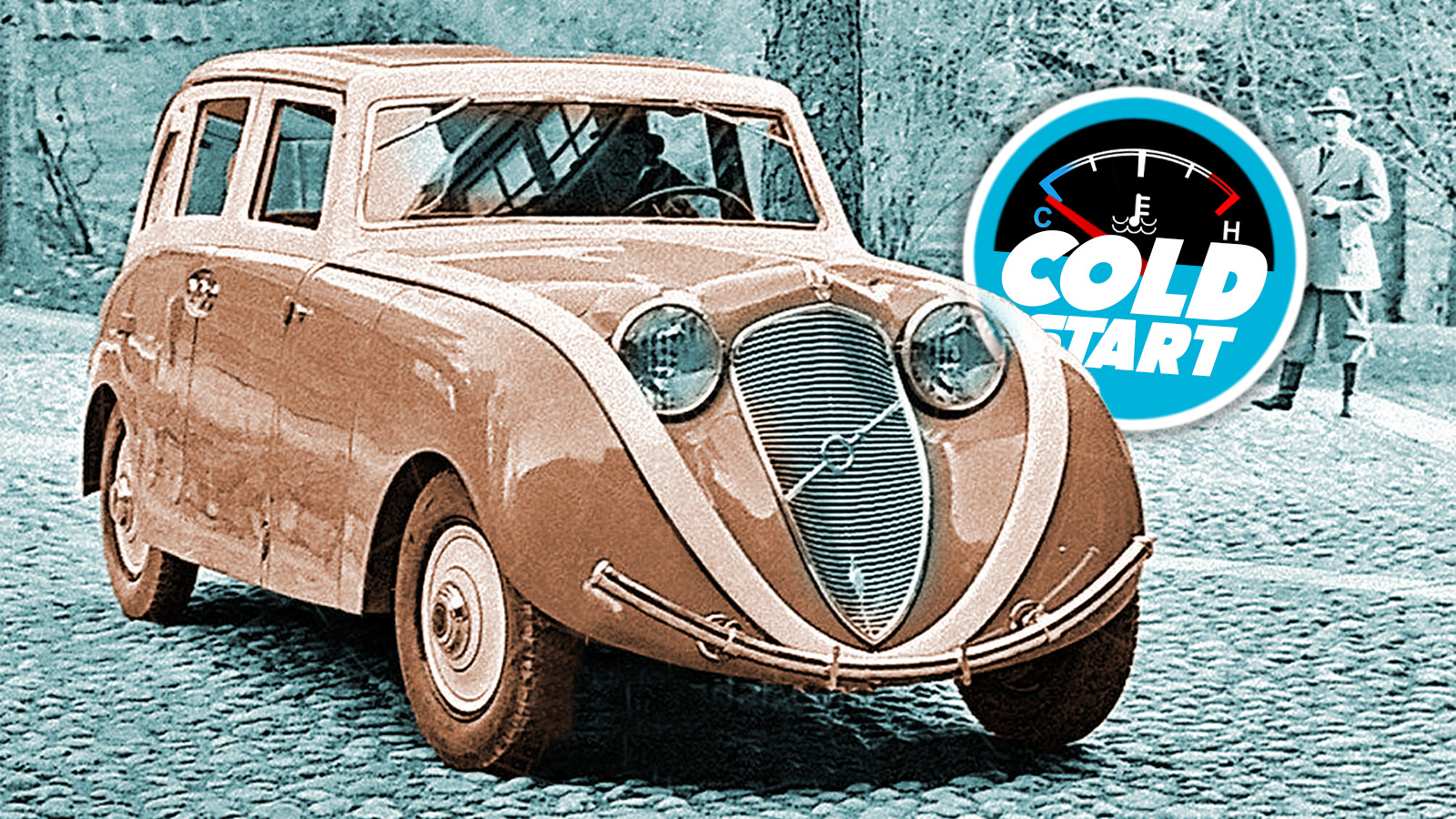
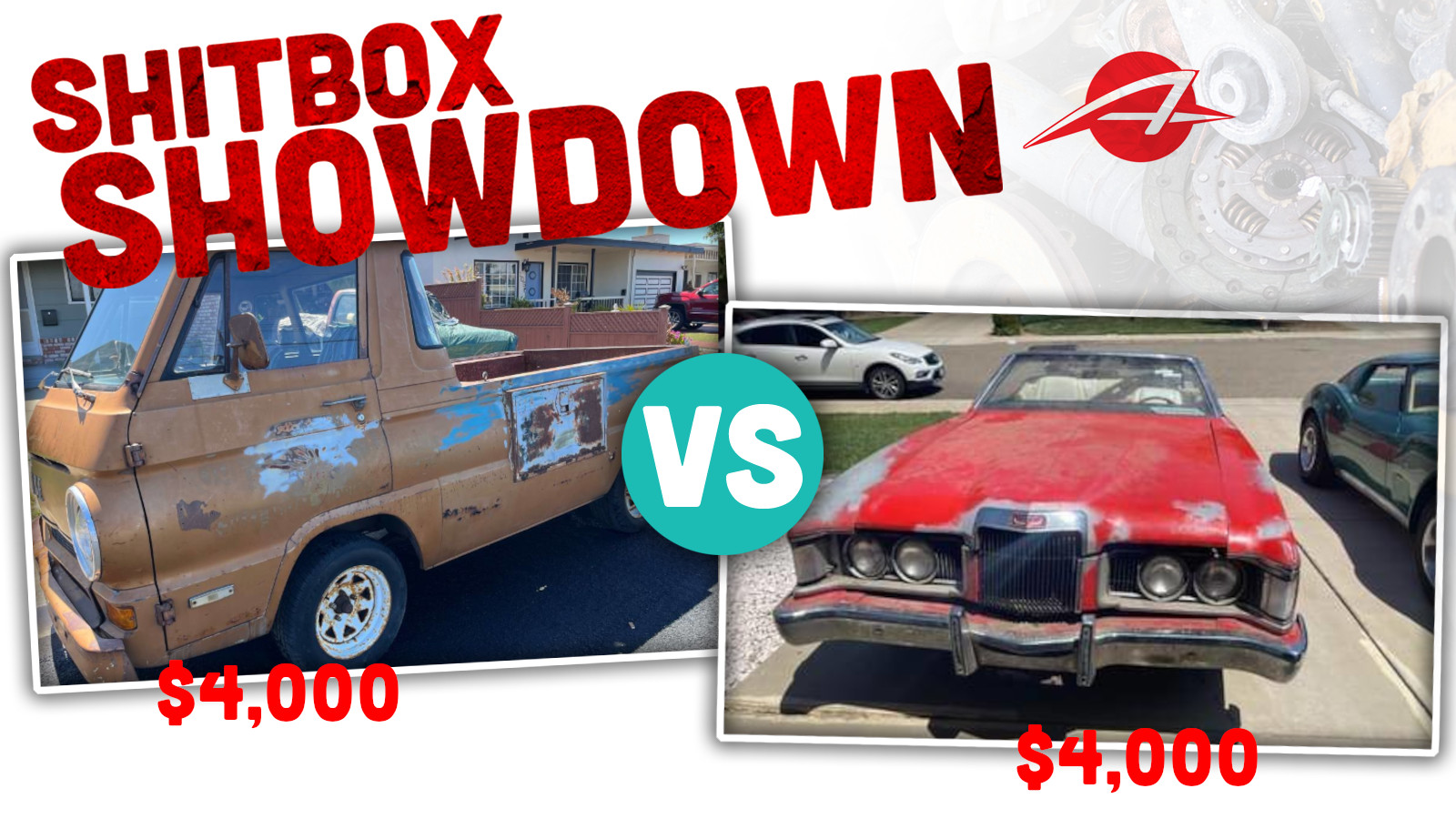
Fun story, this “wagon” is 2.5 inches taller than my 2005 Forester XT was. A thing that was…not a wagon? Also only .6 inches shorter than their current “not-wagon”. They are slicing this pie pretty thin.
Counterpoint: I do care how fugly it is.
I genuinely could not care how good it may seem, as I have negative interest in subaru and their deliberately-awkward designs, failure-prone and annoying CVTs, flimsy panels, thin paint, and cult-like owners.
I don’t know what design school teacher or industry veteran decreed that vehicles must be ugly and have theor headlights inset like a Neanderthal and buried into the bumper beneath the “brow” of front turn signals, but they had to have been trolling, and/or deliberately going for some sort of counter-culture effort, right? We all saw how poorly the KL Cherokee was received, why are companies like gm, Nissan, Hyundai/Kia, and subaru aping that motif?
The KL Cherokee also sold well for many years, so that style wasn’t a deterrent to buyers.
I simply do not understand why Subarus are as popular as they are. I understand why the idea of a Subaru is appealing. The overall shape of the Crosstrek might be the most appealing of any car in the basic-transportation category. A rugged normal car is a cool concept. But have buyers looked into long term reliability and ownership costs? Have buyers driven anything else? The Subaru is far behind the leaders (or even the average) in all categories except for the having mechanical AWD category.
Did you ask if they fixed the touchscreen delamination issue that i’m dealing with for the third time now between the two in our fleet?
The Outback became the Forester so gradually I didn’t really notice until now
“The 2026 Subaru Outback Is So Capable That You Won’t Care How Ugly It Is”
The inverse is more true.
It’s so ugly I don’t care what its capable of.
This right here. This is my take too. Plus CVT = non-starter.
Try me.
I love that Subaru panders to the “carry a shovel and traction aids to pick up the kids” crowd with the styling, then fully acknowledges the actual use case by adding 19s and low profile tires.
Well played.
They know their audience.
Great headline. Before reading the story though, I don’t see how it could be true. This thing makes a Santa Fe look like a pinnacle of classic elegance.
Nope. Granted, I am not the market for this vehicle. My 2-car fleet consists of a compact sporty sedan and an even compacter thirty-year-old roadster. But I would never, not in a million years, regardless of the type of vehicle, buy something that I couldn’t look at over my shoulder as I was walking away and smile.
The way a car looks is important. Maybe it’s not the only thing (otherwise I’d have bought the gorgeous but cramped and visibility-impaired Mazda3 hatchback) but it has to count for something. I’m sure on paper this ticks all the boxes for the REI set but it looks like something built of Lego by a kid who doesn’t have any of the curvy pieces. Subaru has always seemed to conflate “ugly” with “capable”, but at least they used to add “interesting” to the mix. That doesn’t seem to be the case lately.
Does the top trim eyesight plus (or whatever they call it) require a subscription? If it doesn’t, then it has a major advantage over what ford and gm are offering.
That is so ugly that I didn’t care how capable it is. Also if I was going to something that is going to break down as much as a Subaru I would get something fun instead.
Suburu: Styled by Chevrolet™
I saw a comment about how this is still a wagon. This is incorrect, it is not a wagon, it was on thin ice before, now this heavy turd has fallen right through and sunk in to the bottom of crossover pond.
Even if the roof covered 50% of the cargo floor, let us not forget crossover clause B:
https://www.theautopian.com/the-rules-of-what-makes-a-car-a-station-wagon-need-to-be-restated-and-updated/
I rest my case.